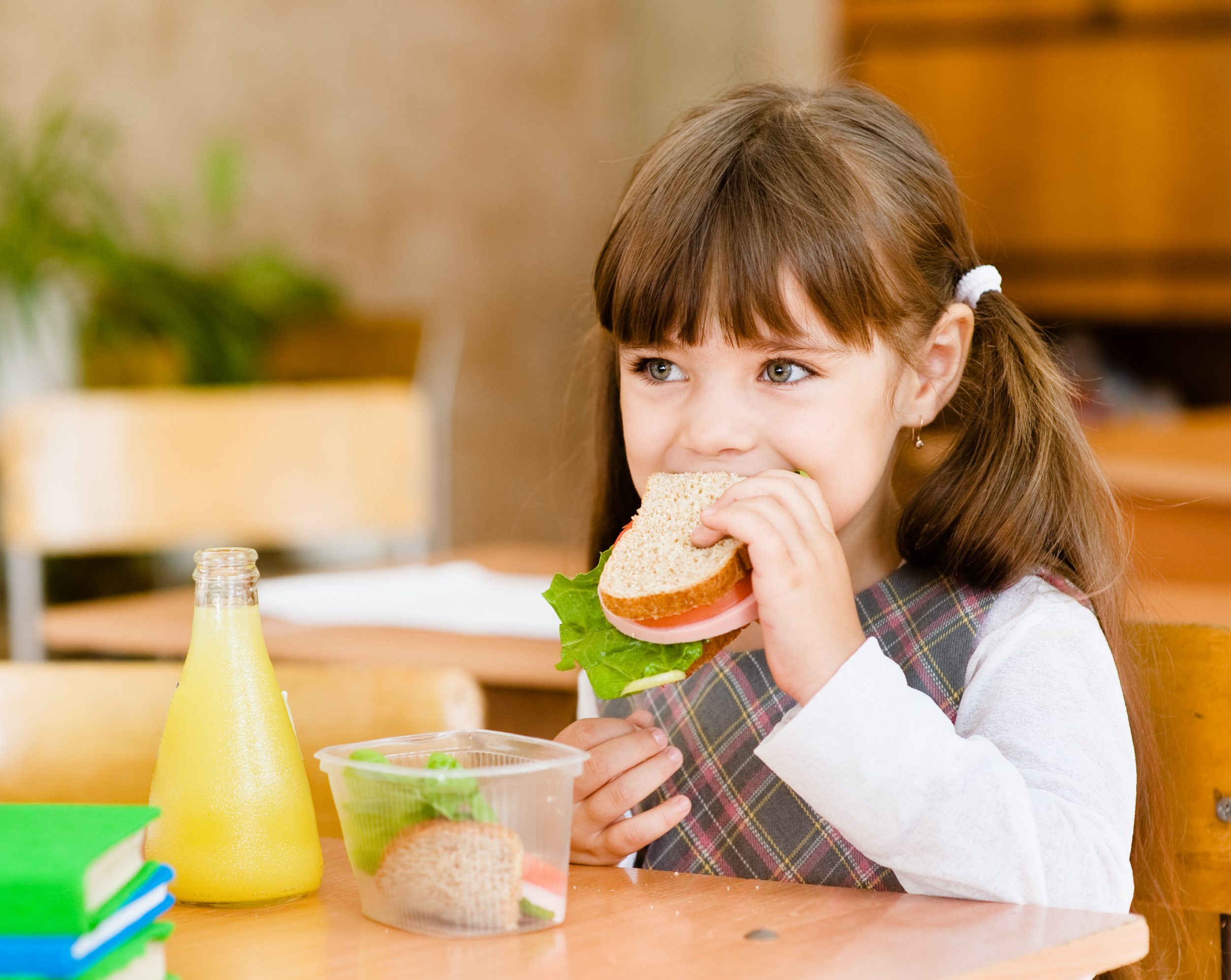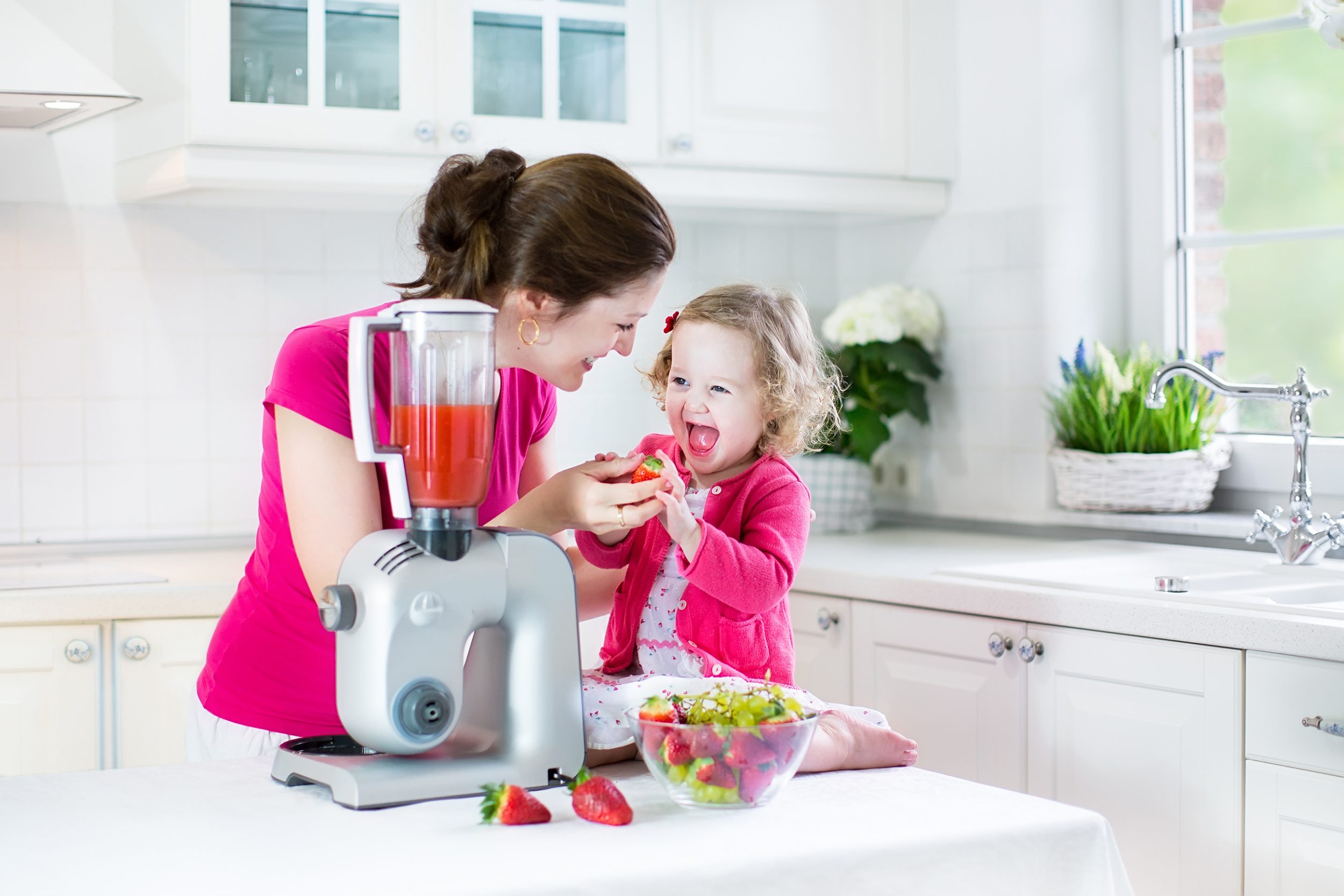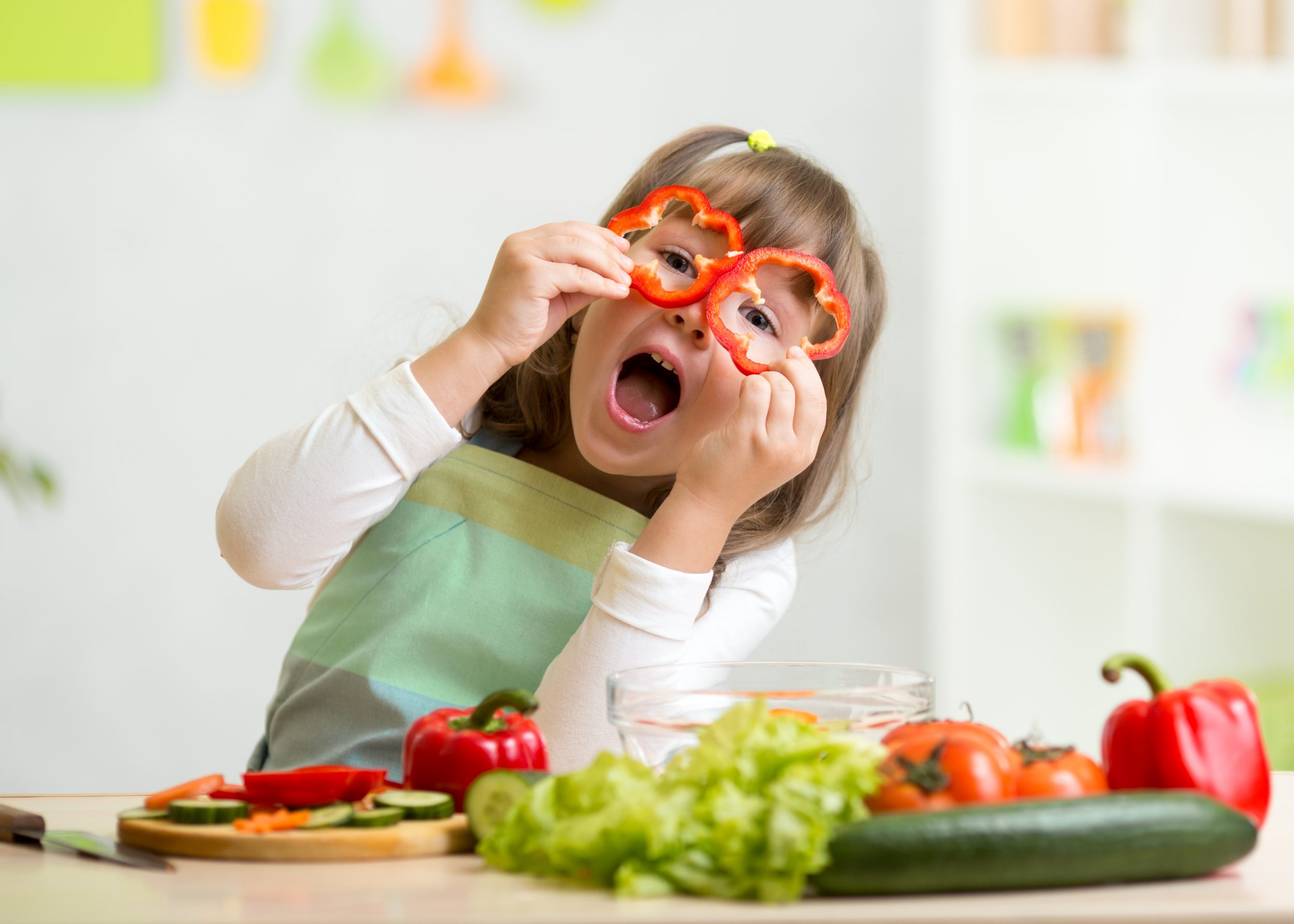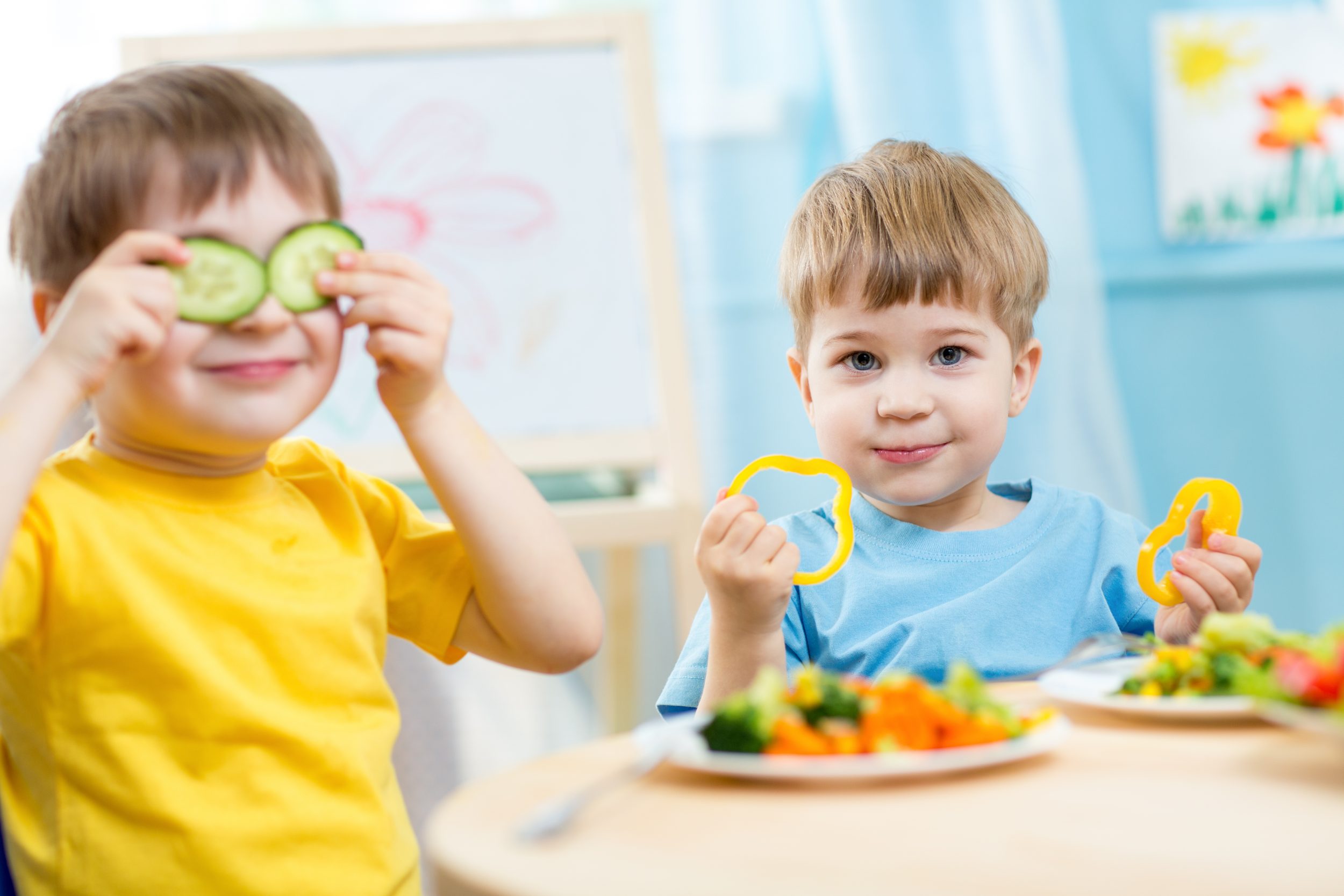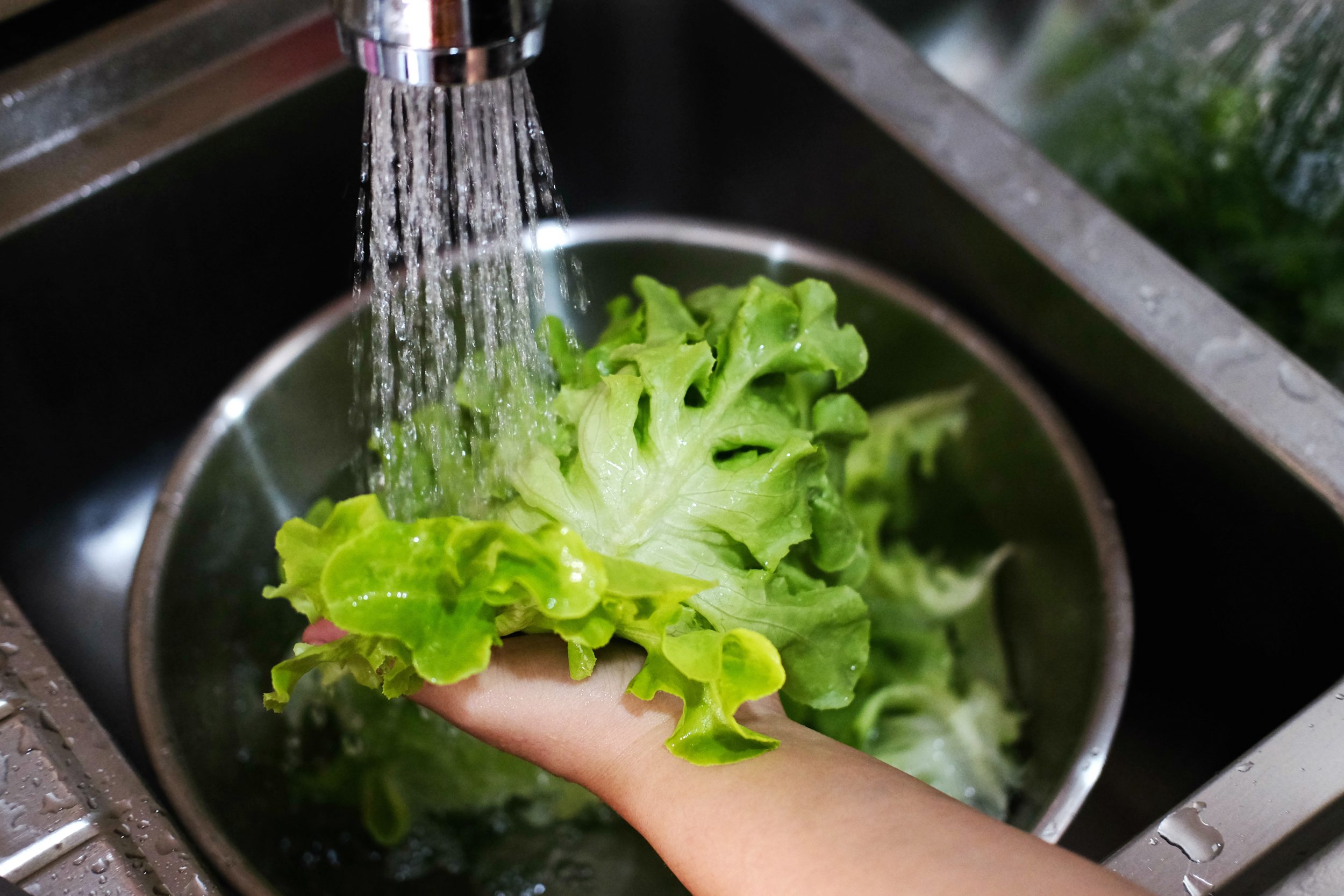
Water is the best drink
Make sure that your child drinks enough. Always pack a drinking bottle when you leave the house. Water is the best option!
Children between the ages of 4 and 10 need 1 to 1.2 litres of waterevery day. Your child should only drink juice from time to time. If you do give your child fruit juice, mix it with a lot of water. Your child should not drink any other sugary drinks: no lemonade, sports drinks, fruit nectar, or syrup. The sugar and acid in these drinks are very bad for your child’s teeth.
Never give your child drinks with caffeine! For example, coffee, green tea, black tea, or iced tea made from black tea. Also, do not give them coke or energy drinks.

Fruit and vegetables with every meal
Your child should have fruit, vegetables, or pulses like peas and beans with every meal. Fruit and vegetables are also a good option for snacks. Make sure to offer lots of different types. Your child should have plenty of variety. Fruit and vegetables that were regionally grown and are in season are best.
Usually, one serving is about the amount that fits in a child's hand. Your child should eat 3 servings of vegetables or pulses and 2 servings of fruit every day. Fruits and vegetables can be eaten raw or cooked. Examples of 1 serving:
- 1 handful fruits: or 2 handfuls of chopped fruit or berries
- 2 handfuls of cooked vegetables
- 1 handful of raw vegetables or 2 handfuls for finely chopped raw vegetables of raw vegetables
- 2 handfuls salad
- 2 handfuls of cooked pulses
Be careful! Pulses such as beans, peas, lentils, chickpeas, and soybeans can be used in soups, spreads or as a side dish, for example. Pulses provide lots of nutrients and keep you full for a long time.
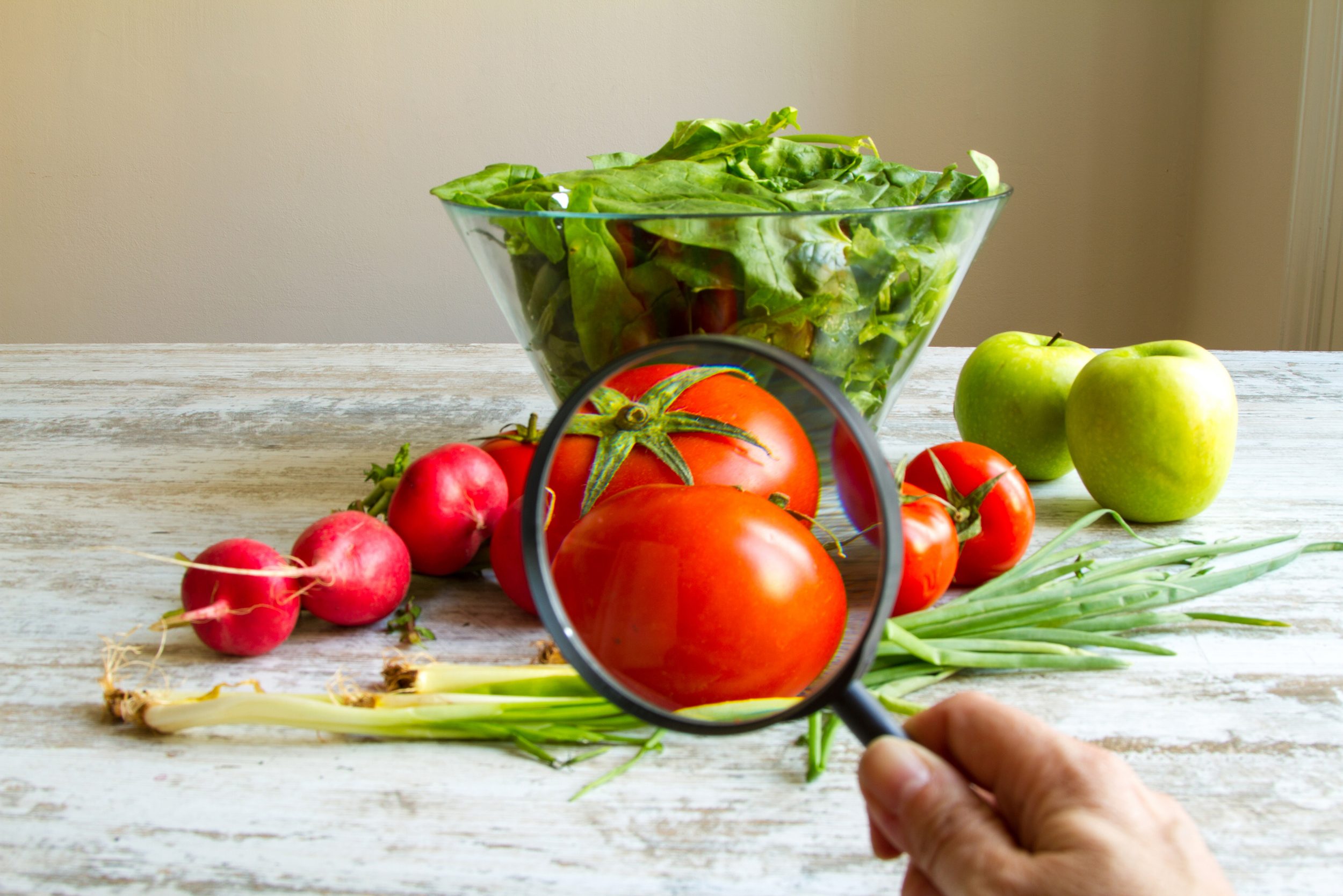
- Cut fruit and vegetables into small pieces. For example, make carrot sticks or apple slices.
- Make sandwiches look fun and colourful. For example, make a face out of pieces of vegetables.
- Always pack fruit and vegetables in your child’s lunch box.
- It is easy to add pulses to dishes that children like. For example, add peas to rice or lentils to sauces for pasta.
Cereals and potatoes fill you up
Children should eat 5 servings of cereals, bread, pasta, rice, or potatoes every day. Choose wholemeal products. Usually, one serving is about the amount that fits in a child's hand. Examples of 1 serving:
- 1 handful of bread und bread roll
- 2 handfuls muesli or wholemeal cereal flakes
- 2 fists of of cooked pasta
- 2 fists of cooked rice or cooked cereall
- 2 fists of of boiled potatoes
It is important that you offer a variety of foods. Most people know wheat and rye. But why not also try spelt, einkorn, green spelt, millet, buckwheat or khorasan wheat, which is also called Kamut®. You can also cook bulgur and couscous quickly. These cereals are well-suited for savoury and sweet dishes. If your child cannot eat gluten, you can use millet and buckwheat. These are gluten-free.
Tip:
- Only buy wholemeal bread and wholemeal biscuits.
- How to get your child used to wholemeal products: Mix wholemeal pasta with white pasta. Buy wholemeal products with a lighter colour.
- When you buy muesli and breakfast cereals: Make sure that they are not sweetened and have no added fat.
- French fries or croquettes should be the exception. It is better to give your child baked potatoes or potato wedges from the oven, for example.
- Use little fat and salt. Make sure that the nutrients are retained. Gently boil the food, cook it in the oven or prepare casseroles.
Milk and dairy products provide calcium
Children between the ages of 4 and 10 should have up to 3 servings of milk and dairy products per day. Variety is important. For example:
- 2 servings of "white products". These are, for example, milk, yoghurt, buttermilk, or cottage cheese. If possible, you should not sweeten these products.
- 1 serving of "yellow products". This is cheese.
1 serving for children is approximately:
- 1/2 glass of milk or buttermilk (125 to 150 millilitres)
- 1/2 cup of yoghurt (100 to 110 grams)
- 1 children´s fist of curd cheese, cottage cheese, cheese spread (50 to 60 grams)
- 1 slice of cheese (20 grams)
Your child can have low-fat milk with 1.5 to 1.8 percent fat and whole milk with 3.6 percent fat. Plant-based drinks are not a complete substitute for cow's milk. For example, drinks made from soy, almonds, or oats. These drinks contain less protein, calcium, and vitamin B12.
Be careful! Milk and hot chocolate are not suitable drinks for a thirsty child. They have too many calories and fill you up! Milk is very nutritious. That is why milk counts as a food rather than a drink.
It is best for your child to simply drink plain milk. If your child does not like plan milk, you can add a little cocoa. But ready-made cocoa often contains a lot of sugar. That is why it is considered a sweet. Look at the list of ingredients on the packaging and compare. Remember: dextrose or fructose are also types of sugar. You can occasionally give your child homemade hot chocolate made from baking cocoa. It is fine to sweeten the hot chocolate slightly. This way, you know how much sugar your child is having.
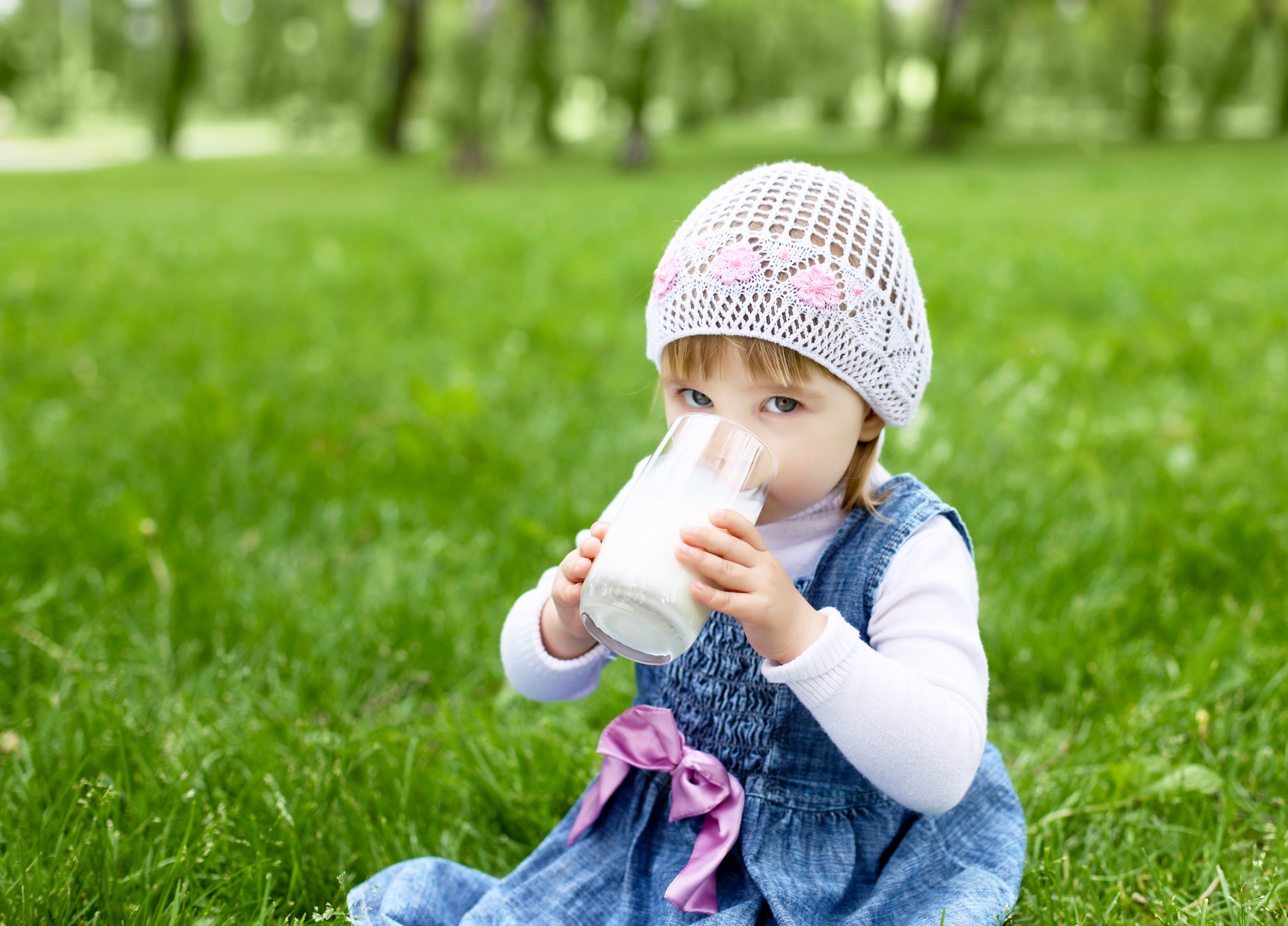
Tip:
- If your child does not like milk, give them yoghurt, buttermilk, or sour milk. Curd cheese with fresh fruit is also a good option.
- Only rarely give your child sweetened dairy products. There is too much sugar in these products, which is why they are considered sweets. It is better to make your own fruit yoghurt: use natural yoghurt and add fresh fruit.
- Make sure that the cheese is not too fatty. Check the packaging. The fat content should be no more than 45 percent of fat in dry matter. On a German packaging look for where it says “F.i.T.”.
Fish provides omega 3 fatty acids
Give your child 1 to 2 servings of fish per week. One serving is about as much as will fit in the palm of the child's hand. For small children, that is about 50 grams. Give your child alternately:
- freshwater fish such as char, zander, trout, or carp
- sea fish with a lot of fat such as salmon, herring, or mackerel
If you do not want to give your child sea fish, they should eat about 1.5 teaspoons of rapeseed oil or linseed oil per day.
Most fish are very healthy, but some types of fish contain heavy metals. You should not eat these types of fish every week. These are mainly predatory fish such as tuna, swordfish, halibut, pike, butterfish, snapper, shark, merlin, swordfish, king mackerel, tilefish, or butter mackerel and snake mackerel.
Be careful! Many children like fish fingers, but these usually contain a lot of fat. That is why your child should not eat them too often. If you make fish fingers, prepare them in the oven without extra fat.
Tip:
- When you buy fish, look for quality labels. For example, the MSC seal of approval and the ASC seal of approval. These show that the fish were fished sustainably. Also, look for recommendations from environmental organisations.
- Carefully remove all bones.
- Hide fish in loaves or casseroles. Make fish burgers or fish lasagne, for example.
Be careful! Fish must always be stored cold. It is best to store fish in the coldest part of the fridge. Make sure that the fish stays cool on the way home from the shop. Use a cool bag or cooling elements, for example.
Buy meat and sausage with little fat
Give your child a maximum of 3 servings of meat or sausage per week.
Example for 1 serving:
- 1 palm of meat: 60 to 70 grams
- 5 to 7 slices of sausage
Tip:
- Do not give your child meat too often. Your child can also get their protein from pulses.
- Remove any visible fat. Always prepare meat with little fat. It is a good option to steam, stew, or boil meat. When frying meat, use a non-stick pan and a small amount of fat.
- Sausage and sausage products often contain a lot of fat and salt. Therefore, your child should only rarely eat them.
- Only buy sausage that contains little fat. The sausage should contain no more than 20 percent of fat. Buy Krakauer, ham sausage, or lean ham, for example.
- Do not make Wiener Schnitzel too often. Instead, make plain Schnitzel (“Natur-Schnitzel”), which is not breaded and takes less fat to prepare.
3 eggs
Your child should eat a maximum of 2 eggs per week. This also includes eggs in pasta or pastries.
Only use good oils and fats
Children between the ages of 4 and 10 should eat up to 25 grams of oils, fats, nuts, and seeds per day. In total, children can eat about 5 teaspoons.
Especially when it comes to fats and oils, quality is more important than quantity. Use good vegetable oils such as rapeseed oil, linseed oil, olive oil, walnut oil, soya oil, and sesame oil.
Be careful! Use little butter, margarine, mayonnaise, lard, or coconut oil. Give your child only small amounts of dairy products that contain a lot of fat. For example, whipped cream, crème fraiche, and sour cream.
Tip:
- Ready-made products often contain a lot of hidden fat. Pay attention to this when shopping.
- Try putting curd on bread instead of butter or margarine.
- If you buy nut and seed purée: Only buy products without salt and sugar. 1 teaspoon of seed puree or nut puree is about the same as 1 teaspoon of oil.
Fatty, sweet and savoury foods should only be eaten rarely
Your child should only eat small amounts of foods that contain a lot of fat, sugar, or salt. It is best for your child to not eat such foods every day. They should only have 1 small portion at most. This applies to sweets, pastries, fatty foods, snacks, sweet dairy products, and sugary drinks. For example, soft drinks, fruit juices without water or syrups.

Tip:
- Rarely give your child cake or pie. Yoghurt and curd cream with fruit also taste good. Make flan with low-fat milk, fruit salad or fruit ice cream.
- Use wholemeal flour for baking and use less sugar than the recipe says.
It is again possible to order our brochures via the brochure service of the Ministry of Social Affairs. Via the following link https://broschuerenservice.sozialministerium.at or by calling 01 71100 - 86 25 25 free of charge.

